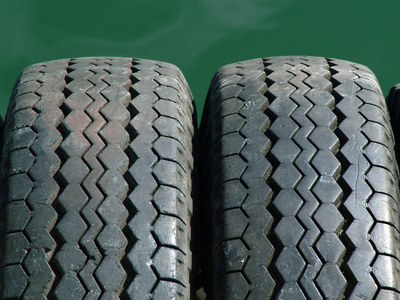
When a car is moving, all that contacts the road are four surfaces about the size of a man's hand. These are the tires. Tires are more expensive than ever, so it is tempting to try to cut corners when replacing them. One way that consumers often try to save money is to only replace one tire, when they should be replacing two. This should not be done for several reasons.
As a tire wears, it becomes smaller than it was when it was new. If the tires are rotated every 5,000 miles to maintain even wear, this is not a problem, because all tires are getting smaller at the same rate. When one tire fails and requires replacement, the new tire is larger than the old tire on the other side of the axle. This can lead to vehicle handling problems, as the larger tire travels more distance per rotation than the smaller one and can cause a pull to one side.
If your tires match and one tire fails for something other than a puncture or impact, the matching tire on the other side may have something wrong with it as well. The chances of this might be slim, but as important as tires are to safety, is it worth taking a chance? It is better to have a safe vehicle, with two known good tires on the axle.
If a tire is no longer available to match the tire that has failed, then both tires on that axle should be replaced. Tires that are different brands could not only have differences in size, but they will have different tread, ratings and rubber compounds that will cause the tires to have different characteristics and could cause problems with pulling or uneven traction.
With tires of uneven tread, the tire with the deeper, newer tread will get better traction. On a drive axle, with a conventional differential, this may cause the tire with the least traction to spin freely, with no power being provided to the tire getting the traction. The result is that the vehicle will not move. If the vehicle is equipped with a limited slip differential, both wheels will have power to them, but the wheel with the greater traction will bite in more, causing the vehicle to pull to one side.